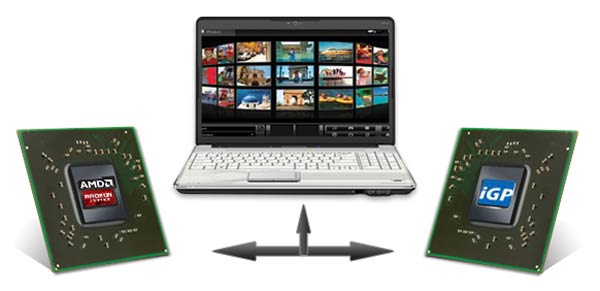In the second quarter of 2013 the graphics chip market has grown and figures suggest AMD and Intel are doing better than rivals Nvidia. While figures remain down year-on-year John Peddie Research (JPR) reports that the switchable graphics trend is an upward one especially as more midrange and gaming notebooks are sold with multiple GPUs.
Looking at the overall numbers first; the PC market declined by 2.5 per cent in Q2 2013 while the graphics market was up by 4.6 per cent. JPR says this is evidence of consumer interest in having a discrete GPU in a system equipped with integrated graphics "and to a lesser extent dual AIBs (add-in-boards) in performance desktop machines". Nevertheless the year-on-year graphics shipments were down by 6.8 per cent, that's down 16.1 million units from this quarter last year.

Drilling down individual manufacturer figures John Peddie Research highlighted the following points:
- AMD’s shipments of desktop heterogeneous GPU/CPUs, i.e., APUs declined 9.6% from Q1 and increased an astounding 47.1% in notebooks. The company’s overall PC graphics shipments increased 10.9%.
- Intel’s desktop processor-graphics EPG shipments decreased from last quarter by 1.4%, and Notebooks increased by 12.13%. The company’s overall PC graphics shipments increased 6.2%.
- Nvidia’s desktop discrete shipments were down 8.9% from last quarter; and, the company’s mobile discrete shipments decreased 7.1%. The company’s overall PC graphics shipments declined 8.0%.
Incidentally JPR also informs us that the average PC in 2001 had 1.2 GPUs, this figure has now climbed to 1.4.
AMD and Nvidia both offer switchable graphics technology which is commonly employed in notebook PCs. From the latest Q2 figures it seems like AMD's solution has been more popular in recent notebook designs. Benefits of both Nvidia and AMD switchable graphic systems include automatic seamless switching, depending upon the task your computer is undertaking. On a notebook this helps achieve a balance between graphics performance and battery life, depending upon what is the greater need at the time.

AMD Dynamic Switchable Graphics technology is said to offer the best of both worlds; "AMD Dynamic Switchable Graphics technology engages discrete graphics only when you need it, using energy-efficient built-in graphics capabilities the rest of the time. The result: a seamless, vivid digital experience with great battery life thanks to AMD Dynamic Switchable Graphics technology." For the green team NVIDIA Optimus technology "intelligently optimizes your notebook PC, providing the outstanding graphics performance you need, when you need it, all the while extending battery life for longer enjoyment."














